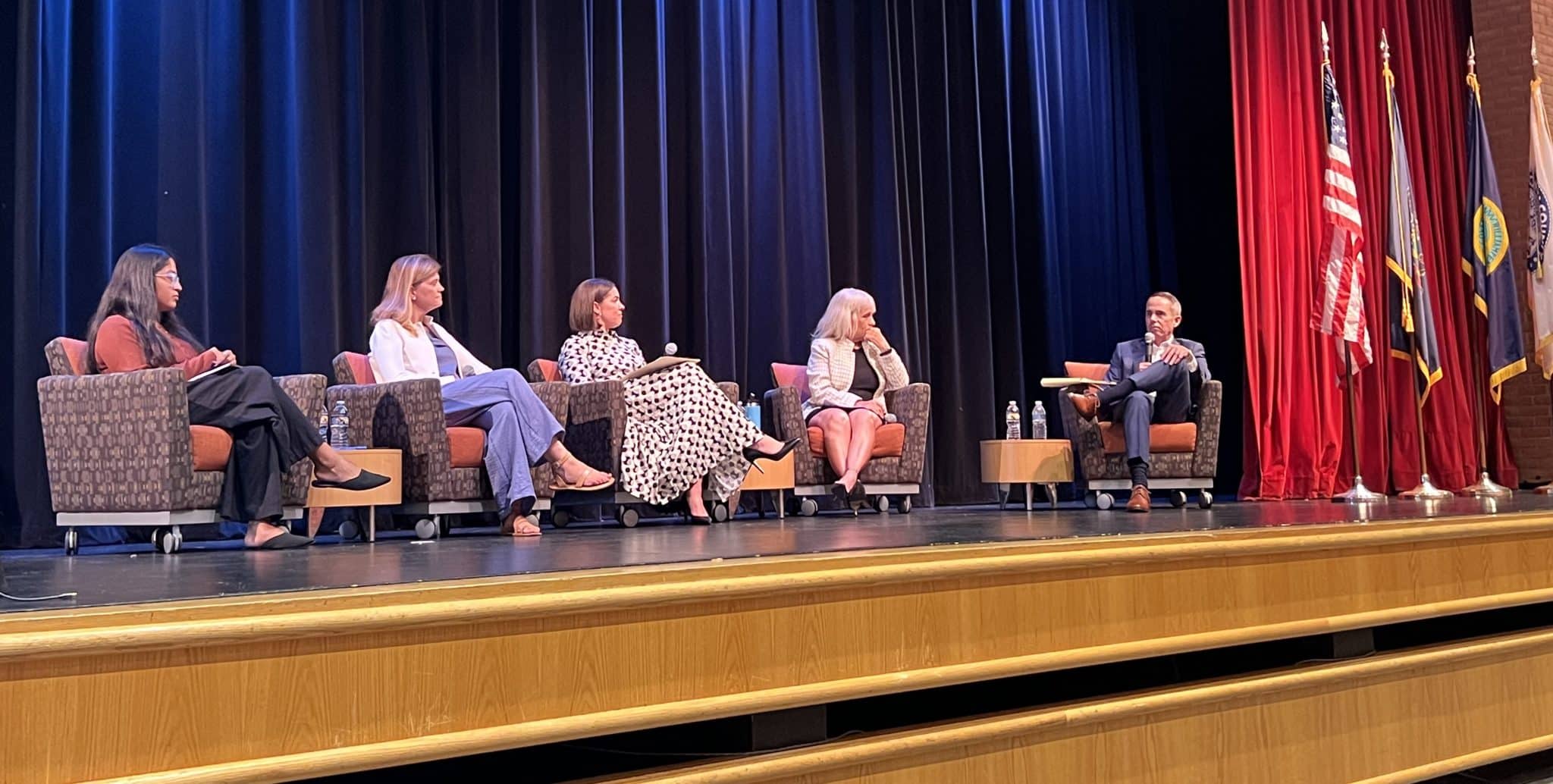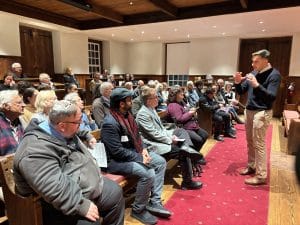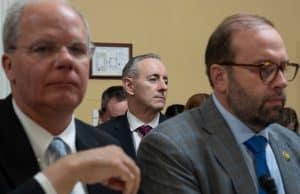State Senator Steve Santarsiero believes managing cell phone use is needed to help mitigate the impacts on Pennsylvania students.
He hosted a panel Thursday night at Bucks County Community College to engage the community in a discussion about the benefits of cell phone-free schools.
Alongside Santarsiero, Bucks County Commissioner Diane Ellis Marseglia; Kirstin McGowan, Parent and Advocate with Wait Until 8th; Christie Besack, Central Bucks West High School Psychology teacher, and Kassandra Castillo, Bucks County Community College student, covered the impacts of cell phone use on students, the benefits of cell phone bans, and different policies regarding cell phone use.
The rise of smart phone and social media use has become a concern, especially with youth and students.
“While these problems transcend our entire society, it seems pretty clear that the impact is potentially more injurious in the school setting than anywhere else,” said Santarsiero.
He is working with Republican state Senator Devlin Robinson and Democratic state Senator Vincent Hughes to draft legislation for bell-to-bell cell phone bans in schools. The legislation has 10 cosponsors from both sides of the aisle.
If enacted, Pennsylvania would join 27 states in restricting these devices including New York, Virginia, and Florida.
CB West’s Besack described seeing a number of positive changes in students after Central Bucks implemented a “bell-to-bell” cell phone ban this year.
“The last three and a half weeks in school since we started with a bell-to-bell phone policy have been wonderful,” said Besack. “There’s really no other way to describe it.”
Besack said she has seen a difference in her students’ dispositions and how they interact with each other. She said she noticed a difference in the students’ ability to focus which has helped move lessons along and allowed teachers to build on relationships.
Central Bucks’ “bell-to-bell” policy bans student use of cell phones during each class period. Students at CBSD schools have access to their cell phones in between classes, but McGowan and Wait Until 8th advocate for “bell-to-bell” policies to ban cell phones from the beginning of the school day to the end. McGowan said access during in between periods can disrupt the long-term benefits of a cell phone ban.
Parents may have concerns about reaching their child in case of an emergency, but the National Association for School Resource Officers says students communicating with parents during emergencies can make students less safe.
“I just don’t think parents have done the full mental gymnastics of what actually happens and the day to day harm that is now proven with the kind of incessant, you know, addictive device in our hand for our kids is way worse than the what-ifs,” McGowan said.
McGowan said as a parent she understands it can be scary to worry about possible emergencies at school, but cell phones can get in the way of students listening to teachers and safety officers during critical times.
Besack said she has heard concerns about safety and pointed out parents can still contact the school through landlines if needed. Besack said parents have raised concerns, but she has not heard complaints from students regarding the ban.
“They start to realize that they’re out living. They’re out living in the real world and they start to appreciate those sort of real interactions instead of being constantly on a device,” she said.
“As with any piece of legislation, it’s important that we have a thorough communication with all the different stakeholders. We’re doing all that now and we’re trying to come to a place where everyone is on the same page.” – State Senator Steve Santarsiero
BCCC student Castillo said she was used to strict cell phone policies while at her catholic high school and during her time at Kutztown. After an academic break Castillo enrolled at BCCC where she noticed a change in attitude toward cell phone use in the classroom.
“Just being one of my first days, everyone’s just on their phone and in my head, I’m like, ‘they’re being so rude, they’re being so rude,’” said Castillo.
Castillo said she doesn’t think fellow students are aware of their increased phone use. Besack has demonstrated this to her students in the classroom. She has students go through their phone usage as part of her curriculum.
“The kids when they grab it and they look at their phone and they’re like, ‘no,’’’ said Besack. “They’re so embarrassed.”
Besack said students want to know the why, and awareness for students is “huge” in how they learn about their behaviors.
The community discussion ended with questions from the audience regarding Santarsiero’s bill and parents’ concerns about cell phone-free policies. Santarsiero explained the bill would follow the full day bell-to-bell ban on smart devices, but would give districts flexibility on how to accomplish a bell-to-bell ban. Similar to the states with cell phone bans, the Pennsylvania bill will make exceptions for students who need a smart device for a medical reason.
The bill’s bipartisan support could help push it through the state senate and Santarsiero said he feels confident he can get the bill for a vote in the House.
“As with any piece of legislation, it’s important that we have a thorough communication with all the different stakeholders,” said Santarsiero. “We’re doing all that now and we’re trying to come to a place where everyone is on the same page.”







